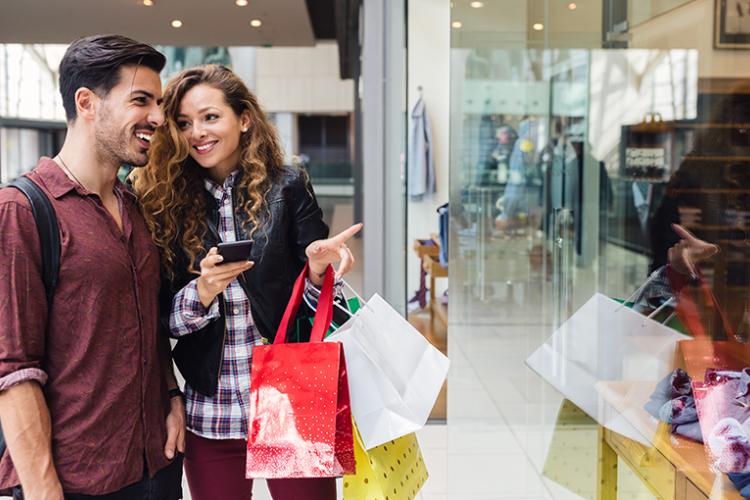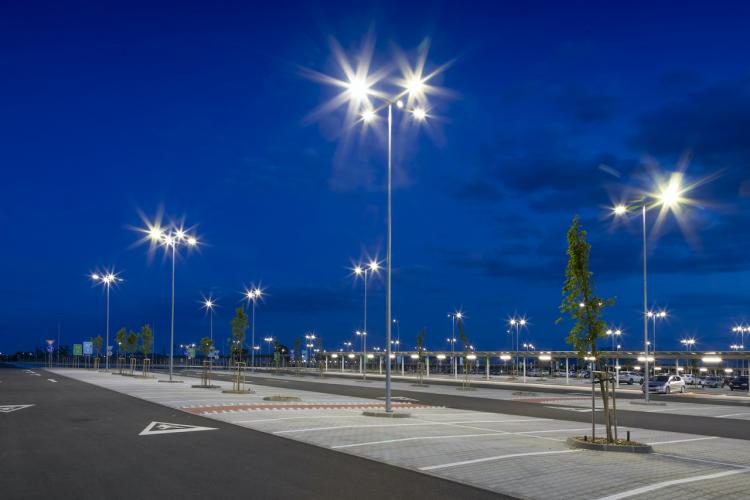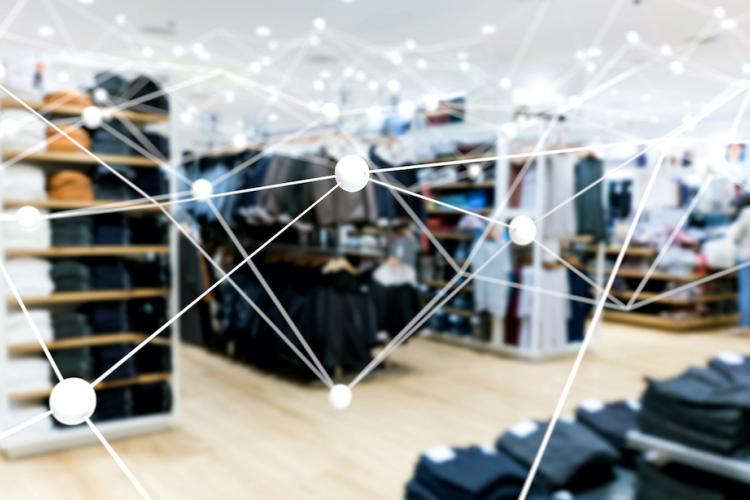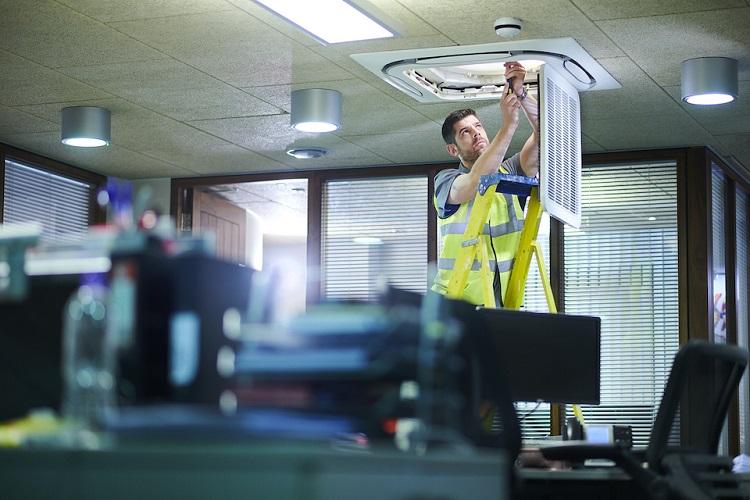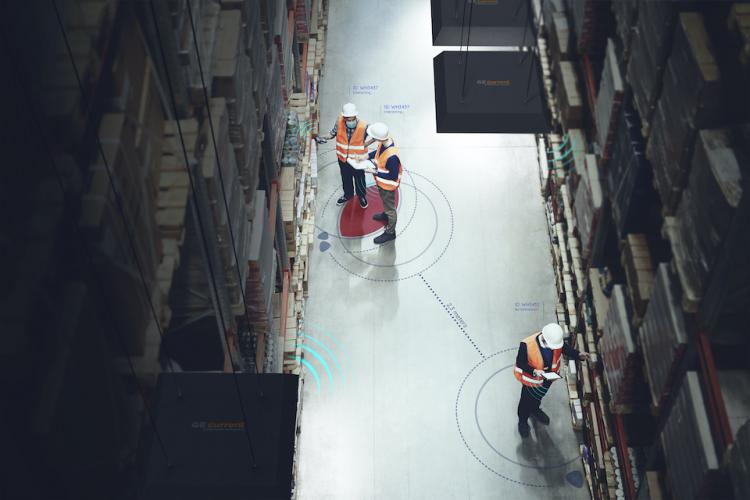Whitepaper: Unlocking In-Store Personalization
Whitepaper: Unlocking In-Store Personalization
The Missing Link to the Single Customer View
In a hugely competitive retail landscape, the fight is on to provide shoppers with a uniquely personal experience that will encourage them to return to brick-and-mortar stores time and time again. Retailers are searching for ways to convey customized communications and gain data-based insights about the customer journey. Smartphones may be the key, but implementing supplemental technologies to unlock those outcomes is a much bigger challenge.
From heat mapping, smart shelving and Bluetooth beacons to smartphone payments, RFID tags and virtual reality, there is such a broad spectrum of technologies on the market that it can be an overwhelming task to choose where to focus budgets and resources. It is essential that companies hone in on their key priorities when it comes to deciding which disruptive technologies they want to invest in, and for many, that centers on their customer relationships teamed with tactics to drive sales.
Technology now drives almost every step of the retail experience. Through our exclusive customer and retailer research, we will drill down into how shoppers are using their smartphones and assess how retailers can take advantage to provide a personalized shopping experience.
Our research shows that there is significant potential for retailers to deliver a highly personalized in-store shopping experience. The following guide will highlight the pivotal wants and needs of the customer along with the digital infrastructure that retailers can deploy to make this a reality and in turn move toward achieving the much-coveted single customer view.
Current, teamed up with Retail Week to investigate the technologies to best aid retailers in effectively personalizing their in-store experience for customers.
THE STATE OF PLAY
For many retailers, personalizing their customers’ shopping experience across all channels is now becoming a critical strategic imperative. “Personalization is such a big area for everyone to really get right,” says the finance director of a major grocery chain. “It is something that everyone is wrestling with. We’re all testing and learning. I don’t think I’ve been in a room with anyone who has said: ‘We’re absolutely nailing this, and we’ve got it perfect.’”
Personalization can take many forms, whether tailored communication, directed deals and promotions, or recommended products based on purchase history. Online shopping is already very personalized on every platform, but the in-store experience is yet to be effectively adapted for each individual.
Despite online sales continuing to grow at a rapid pace, research from TimeTrade recently revealed that 85% of customers prefer to shop in physical stores. Plus, with companies such as mattress startup Casper, Amazon and Peloton dipping their toes into physical stores, it is clear brick-and-mortar locations still have a lot to offer.
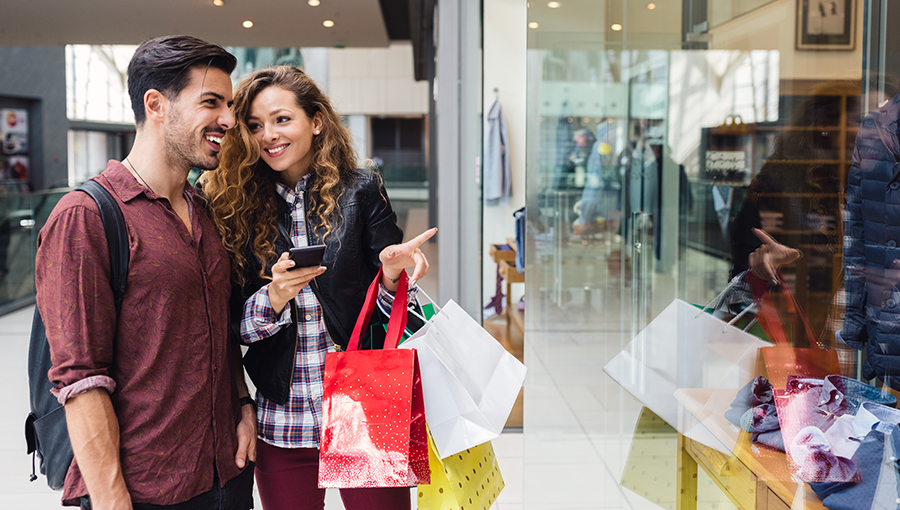
IN-STORE TECHNOLOGIES
Indoor positioning, or the ability to locate and track people and objects throughout a space, provides the foundation for monitoring customer behavior. Not only does this begin to collect the critical information necessary for a complete view of a shopper, but it offers a number of other benefits for retailers.
WAYFINDING
Track how customers are moving throughout a store to optimize the layout.
PRODUCT TRACKING
Monitor the location and movement of high-value assets to improve loss prevention and inventory practices.
COUPONING
Provide offers and promotions to customers in real time to incentivize a purchase.
The use of in-store location services technologies also benefits retailers in additional ways, though they are not directly connected to personalization. Based on real-time data extraction from inside their shops, retailers can create floor plans that maximize shopper traffic, monitor point-of-purchase performance, react to real-time events and alert staff to open more registers when needed.
There has been much discussion around productivity in the workplace in recent months, and sensor technology could go one step further in helping retailers to enhance their efficiency.
This can be understood via information extracted through a digital infrastructure equipped with the right sensor technology. The idea is that each sensor can communicate with the shopper’s device of choice and then send data back to the cloud, where it is triangulated with information from other channels and analyzed to provide a truly multifaceted view of that customer. Here are some of the key sensor technologies that can be deployed as part of this infrastructure.
BLUETOOTH BEACONS
Bluetooth low-energy (BLE) beacons have perhaps been the most talked-about technology in this area to date. BLE has an incredibly high accuracy, can send push communications and has very low energy consumption.
Bluetooth beacons were previously known for only being able to send signals one way, and therefore positioning was only ascertainable via the app on one’s smartphone. However, more-modern innovations now mean that BLE beacons can engage in two-way communication, thus eliminating a key drawback and reaffirming BLE as one of the leading sensor technologies.
One home improvement retailer has been experimenting with beacons and has been testing location data in stores. The tests have seen the retailer identify customers in store and then send them personalized notifications based on their location.
However, the chain’s omnichannel director says there have been some reservations surrounding it. “There is a fine line between ‘wow’ and ‘whoa,’” he says. “You need to get it right, and it’s got to be useful for the customer, so it’s got to be completely customer-led as opposed to commercially led.”
This retailer is also using a data management platform to feed through all its different data sources to move toward a complete view of each individual customer.
WI-FI
Wi-Fi is perhaps one of the most obvious methods for indoor positioning; however, its accuracy is somewhat questionable compared with other available technology.
Notwithstanding issues around location accuracy, Wi-Fi is an excellent conduit for sending push communications and is one avenue some retailers are already venturing down.
One fashion chain is currently upgrading its Wi-Fi access points to not only improve the coverage in store, but also to start investigating how it can use Wi-Fi for the customer journey.
The retailer’s retail program manager explains: “A couple of years ago, we had the more traditional footfall counters at our entrances and exits; but now we see the opportunity is moving away from that traditional style of counting ‘ins and outs’ and to start using some of the new technology to look at customer navigation in store.”
VISIBLE LIGHT COMMUNICATION
Another technology available is visible light communication (VLC), which uses light as a means for communication between the light source and the target device. This is done, for example, through the rapid flickering of LEDs to send encoded data in a specific pattern undetectable to the human eye.
One of the main advantages of VLC is its extremely high accuracy; however, if it is used as the sole technology, this accuracy is somewhat compromised by the fact that the device (smartphone) must be constantly exposed to the light signal (e.g., taken out of your pocket) in order to sustain communication.
AUDIO
Where VLC uses light as the conduit for pinpointing a device’s location, accurate indoor positioning can also be achieved using sound waves as the sensory communicator.
Inaudible, controlled sounds can be transmitted from multiple sources at known positions to communicate with the microphone on an individual’s smartphone. This enables location tracking of the individual to within 3 feet.
VIDEO ANALYTICS
Camera technology and video analytics can provide retailers with detailed information on the number and demographic of shoppers in their store at any one time as well as distinct navigational patterns. This can help retailers design their stores much more effectively to better cater to shoppers based on this insight.
However, while this enables decisions to help optimize a shopping experience for the aggregate behavior of demographic clusters of shoppers, it does not cater to one-to-one personalized communication with them in real time.
So it’s clear that in order to achieve the single view of the customer, retailers will need to implement a suitable in-store digital infrastructure. But what are the main benefits for the customer?
A report published by Retail Week in association with Current highlighted the key rewards for customers in sharing their location data with retailers. The nature of the incentive can be classified into three categories or pillars: navigation, education and promotion. Each pillar adds value to the shopper journey, albeit to varying degrees:
NAVIGATION
Shoppers can be guided around a store based on their own personal preferences.
EDUCATION
Shoppers can attain further real-time product information on demand.
PROMOTION
Shoppers can benefit from real-time personalized promotions in store.
One fashion store is looking to implement technology to improve the online-purchase with in-store-pickup experience for shoppers:
"We're looking at technology that can alert us to the customer potentially being in store, so if they are in store, then the team can be alerted to get the purchase ready for the customer to collect."
- retail program manager
SINGLE CUSTOMER VIEW
The focus is now turning toward how to enhance the in-store experience for customers by providing a personalized shopping journey, but the only conceivable way to achieve this is to unravel a single view of the customer.
Over the past few years, retailers have been attempting to create this unified view of the customer across all platforms, which will give them the ability to analyze past behavior in order to better target and personalize future interaction.
"The key thing about personalization is data. If you haven't got a reward card or some kind of single view of the customer, then that makes it really hard to personalize. It is relatively easy through the digital world because there are various ways of collecting data. But I'm only getting one side of the story online if I'm a retailer; I also need the offline data. If I haven't got both, then I'm not going to give the customers the right experience of the brand."
- IT and e-commerce director for a fashion retailer
So how do retailers go about collecting this in-store data, and how do they best provide shoppers with a personalized experience? Results from the Current and Retail Week survey of 1,000 customers found that 65% use their smartphones when out shopping. So there is a clear opportunity here to leverage this trend to create a truly personalized experience across all channels, including in store.
Personalization nirvana for the retailer means treating each customer as an individual and tailoring their experience from the first interaction through to the final purchase specific to each occasion, regardless of the device or setting. With an estimated 80% of the worldwide population using smartphones, these handsets could almost certainly hold the key to the personalization kingdom.
One director of digital product at a department store says:
"Mobile is the piece you really want to harness in a physical environment. We think it is a huge opportunity."
WHAT SHOPPERS WANT
It is already apparent that the majority of shoppers utilize their smartphones when out and about, but in which stores do they use them most?
It probably won’t surprise you to learn that a whopping 40% of customers use smartphones mostly in grocery stores. Clothing stores are the next most popular at 22%, followed by 16% of people using them in electrical/technological stores.
Current and Retail Week looked to ascertain exactly how shoppers feel about in-store personalization, how this might add to their overall retail journey and where there may be underlying areas of apprehension.
When asking respondents about what they use their smartphone for when out shopping, it becomes abundantly clear that price comparison is key. An astonishing 57% of respondents say they have checked prices on competitors’ websites. Of those surveyed, 41% have also sought coupons and deals on their smartphone while out shopping. Meanwhile, further details are important to many, with 42% of respondents using their smartphone to search for product information and 38% searching for reviews.
How many of these have you done on your smartphone when out shopping?
Encouragingly, almost one-third (31%) have used their smartphone in store to access the retailer’s website. Apps provide another channel to connect with customers, and 63% of those surveyed say that the ability to receive real-time personalized promotions, product information and help through a retailer’s app would be perceived as a signal of enhanced customer service. Furthermore, 82% say the greatest incentive to download and start using an app right away would be if it could save them money—a significant message to retailers concerned about how to entice customers to “opt-in” to this new digital experience within physical stores.
Armed with information from online reviews, deals and comparisons, a huge 71% of customers are more likely to make a purchase than without them, a massive incentive for retailers to provide shoppers with these types of details.
Additionally, 59% of respondents say they would be more likely to visit a shop if it offers personalized promotions and deals sent via smartphone in store. Yet it is clear this is more important to the younger generation, with a massive 80% of 18- to 24-year-olds saying they are more likely to visit a store if it offers deals via smartphones compared with a less significant 39% of over-55-year-olds.
A. Would you be more likely to visit a shop if it offered personalized promotions and deals sent via smartphone in store?
B. Age breakdown in respondents who answered "yes"
C. If you could translate your favorite benefit of online shopping into an in-store setting, which would most improve your experience?
The efficiency and ease of being able to shop online is a big plus for many customers, yet the ability to seek deals and promotions to find the best price is the most enjoyable aspect of online shopping for 48% of respondents. In fact, 60% of respondents say being able to translate this into an in-store setting would most improve their shopping experience.
With the data demonstrating that customers are more likely to both visit a store and purchase more items if they can leverage some of the key benefits of in-store personalization, it is no wonder there is such intense effort to implement the correct infrastructure for this across the retail sector.
It is fair to say, however, that there is absolutely no one-size-fits-all standard, and there are often numerous barriers that need to be overcome to begin successfully moving toward this goal.
OVERCOMING BARRIERS
It is evident that both customers and retailers are ready for omnichannel personalization to become a tangible reality, but it is also clear that this isn’t culminating at the greatest speed. In order to achieve pure cross-channel personalization, retailers must achieve a single view of each customer, and to do this they need to understand customer behavior in store at a much more granular level.
While there are some technologies and methodologies that can be exercised, there are still a significant number of challenges that need a carefully calibrated approach.
PRIVACY
With the implementation of new sensor technology to enable personalization, retailers will be able to extract an abundance of new and intricate datasets on shoppers’ in-store behavior. This data is extremely valuable, and retailers will potentially be able to sell this on to their many partners and suppliers. The sale of data from retailer to partner/supplier is not a new practice by any means, but as this data is likely to be more granular and less anonymized in the endeavor of achieving true personalization, a clear opt-in from the end-user and clarity of use terms are warranted from the outset.
However, some customers still remain cautious about retailers handling their data on location, and of those surveyed, 31% say they distrust retailers to handle this information in a responsible and secure manner. However, almost half (49%) of shoppers we spoke to say they trust retailers but are somewhat hesitant; therefore, businesses must build trust with customers in order to put the mechanics in place to pinpoint an individual’s location and feed through a personalized service.
One department store digital product director says: “There is a fine line, a really fine line between making it personal, surprising and delighting, and the customer being wowed in a good way, and then on the flip side, overstepping the line. We need to get it right. What we want to do is use the information to help them, so that we’re not intruding, we’re helping. You just need one brand to overstep the mark and the customer could turn off their location data or all their cookie data, so the whole industry needs to work appropriately.”
SECURITY
Data security has long been a concern for most retailers, and with the exponential growth of big data and cloud computing services across all industries, this is only likely to become more pivotal.
With other forms of data residing in loyalty programs and e-commerce applications, most retailers will already have strict data security protocols in place. In conjunction with these other datasets, in-store behavioral data should be treated with just as much care.
When building an in-store digital infrastructure, retailers should ensure their chosen partner makes regulatory compliance and data governance a top priority with regard to the software architecture deployed in order to meet minimum standards. End-to-end security encryption is an absolute must, and hard-line measures should be implemented across all four critical points of data transport: at the edge, in the network, in the cloud and at the application.
FUNDING
Investment in new technology rarely comes without some form of initial capital outlay. Some retailers would be forgiven for showing apprehension around new investments in areas that have yet to be entirely proven out.
The retail program leader from one fashion chain adds: “My biggest fear at the moment is that there is a lot of work to do and it requires a significant investment, and in the present climate, I’m not sure we’re going to be able to move as fast with it as we want to.”
However, the funding needed for these types of projects doesn’t need to be a deterrent. A digital infrastructure can be installed as part of other construction or energy-efficiency projects, such as remodeling or lighting retrofits, even if the sensors are not immediately turned on. Additionally, the energy savings from such building upgrades is often substantial enough to make up for the initial cost of the infrastructure.
Another important consideration revolves around choosing a future-proof product. Considering only open-system technology is key to achieving a greater level of assurance. The right solution is flexible enough to accommodate future technologies and use cases without limiting retailers with unnecessary (and expensive) hurdles. An open system bypasses proprietary costs and restrictions, allowing organizations to turn to open source programs or internal teams for application development or data analysis.
BREAKING DOWN SILOS
As in-store personalization is something of a new phenomenon, it can be difficult to decide in which area of the business it should reside. Should it be solely managed by the IT team, or should the store managers have a say? Marketing teams will almost certainly want a look, as will the financial leaders or CFOs holding the purse strings. But what if we were to suggest that it should not reside solely within one function?
At one grocery chain, the job of personalizing the customer experience lies across varying functions. “It sits with the customer team to create,” explains the finance director. “Then we essentially have specialists—individuals within both digital and customer teams—who can convert that message and vision into the right application.”
The consistency of the journey for a customer is key. “You’ve got to get all your back-end system processes, people and cultures aligned to the modern reality,” says the e-commerce director from a fashion chain. “The customer expects a seamless experience; they don’t expect a disjointed experience.”
Julian Chatwin, enterprise software director at Current, also notes that including functions that might not at first seem like a natural fit might provide a more holistic approach and can often provide greater efficiencies and further alleviate the initial capital burden mentioned in the section above.
"It might at first seem paradoxical to consider your energy strategy in conjunction with the desire to understand the in-store customer journey; however, if a retailer was to build their in-store digital infrastructure by deploying sensor technology within intelligent LED light fittings, there can be a positive domino effect on ROI."
“The energy savings realized from efficient new LED lighting in store can be directly redeployed as a part-funding mechanism for the sensor technology, which in turn has the objective of dramatically improving the shopper experience and increasing sales.
“Converge the overall investment into one customized finance package with monthly payments over a predetermined timeframe, and you can see that the business case starts to become extremely compelling.”
TECHNOLOGY SELECTION
There may be an abundance of technology to choose from but there is clearly no one-size-fits-all solution, and retailers must carefully consider their options when choosing which technologies are best suited to them.
"At Current, for example, we can offer a plug-and-play intelligent LED light fitting, meaning that the retailer can have the perfect mix for their data-collection needs and in parallel offer the right level of communication and personalization to their customers."
Current’s Julian Chatwin goes on to explain that this should be a painless experience that provides retailers with a tailored infrastructure to fit their individual needs. “Retailers do not need to make binary choices when it comes to implementing the right sensor technology,” says Chatwin.
CONCLUSION: NOTES FROM THE AUTHOR
Whether you look at the results from a customer or a retailer perspective, one thing is abundantly clear: Achieving a fully personalized, seamless shopping experience is becoming of critical importance, and attaining a single customer view is the only conceivable route to successful delivery.
Retailers can achieve true personalization by understanding the granularity of each customer’s behavior both in store and online. The in-store part of this equation can be addressed with various sensor technologies forming part of an in-store digital infrastructure to sync seamlessly with pre-existing online platforms.
If retailers choose the right partner, they need not be daunted by the various obstacles that must be navigated. By choosing a partner and not simply a transactional supplier, retailers can rest assured that a custom and secure digital infrastructure will be developed based on their own individual circumstances and strategic objectives.
We at Current work hand-in-hand with the retailer to deliver a complete solution under one roof, from selecting and installing the requisite combination of sensor technology, delivering a safe and secure cloud solution with back-end software analytics, to even providing tailored payment plans to alleviate capital outlay and accelerate ROI.
Current provides an open system that can partner with an entire ecosystem of software providers and is future-proofed against developments to come.
The journey to achieving the single customer view should not manifest as a tedious or uncomfortable experience. Your partner should deliver a burden-free, custom-made solution that will enable you to stop losing sleep about how to get there and instead start concentrating on how to best leverage your new, meaningful customer data and begin delivering an enhanced and completely personalized shopper experience.
 Author
Author
JULIAN CHATWIN
Enterprise Software Director
Current
Email: [email protected]
INTERESTED IN LEARNING MORE?



